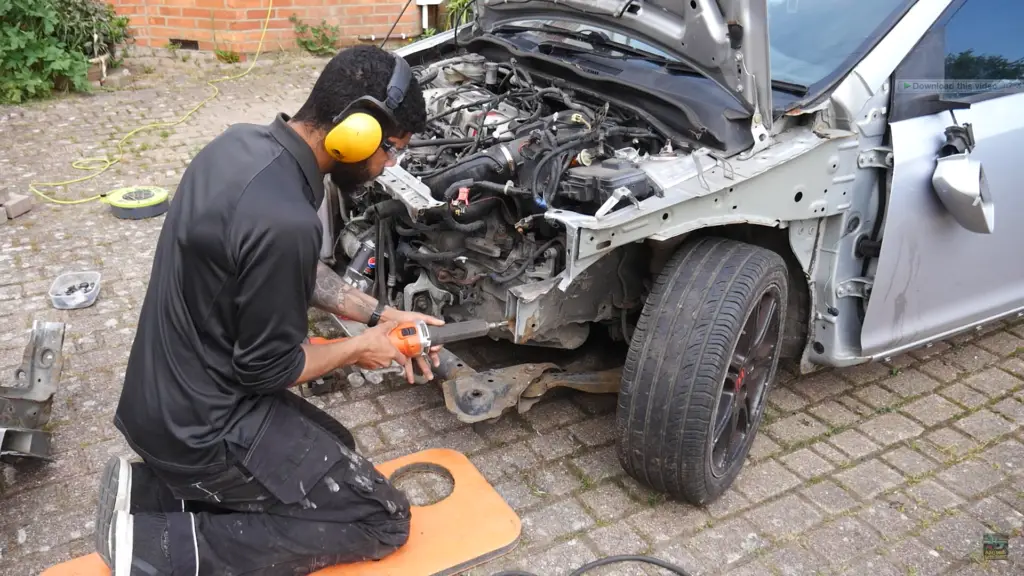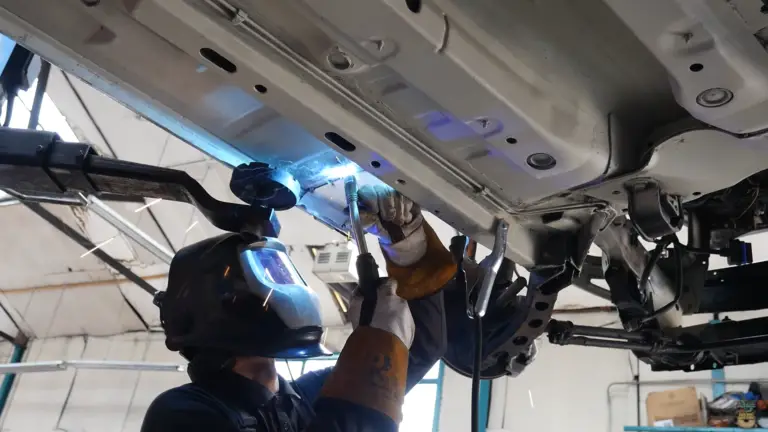Welding is very effective for joining or repairing metallic objects like cars. However, there are downsides to choosing this solution for repairs or modifications. Welding involves electricity and could cause damage to your vehicle without the proper precautions. This article will explore some safety precautions you should use when welding your car. Without further ado, let’s get into it.
What Precautions Should Be Taken When Welding a Car?
Welding your car is essential in some situations. However, we can’t ignore the risks it comes with. Below are seven precautions you should take when welding your vehicle. Below, we’ve broken the tips into two sections: what to do before and after welding.
What to Do Before Welding?
Follow the three tips below to minimize the chances of danger when you’re welding.
- Disconnect the Battery: The first step you need to take is to disconnect the battery before beginning the welding process. Remove all the wires attached to the battery, and remove them from the welding environment. You should also disconnect the ECU and other electrical components while at it.
- Use the Grounding Technique: Grounding helps you take the excess electricity to the ground. This can save the battery and other sensitive equipment used in the welding process. The best part is that there’s still enough electricity left for the welding process.
- Don’t Weld Near Flammable Objects: Fire accidents are common when welding. This is because of the high-voltage electricity used for welding. Therefore, empty the car fuel tank before the welding begins. Also, cover your car seats with non-flammable clothes and remove all sealers, foams, or adhesives around the welding area.
Precautions to Take After Welding
After the welding process is complete, there are some steps you need to take to prevent further risk to your vehicle.
- Inspect for Damage: You should carefully inspect the welding area for any damage. Keep an eye out for burns, discoloration, melted wires, or warped components. Look for visible issues caused by the heat produced during the welding process. Identifying and addressing such damages quickly can help prevent further problems.
- Test and Verify Functionality of Electrical Systems: Reconnect the battery and other electrical components and then test to verify the functionality of these electrical components. Check the lights, indicators, turn signals, power windows, etc. You can also scan for diagnostic trouble codes to find out potential issues that occurred during the welding process.
- Perform a Post-Welding Clean-up: After welding, clean the work area thoroughly to remove any debris, welding slags, or metal fragment left behind. Ensure you use the right cleaning method to prevent contamination or damage to your car’s electrical components.
How Do You Protect Car Electronic When Welding?
Protecting your car electronics is essential during the welding process. This will help to prevent potential damage. Below are some steps you can take to protect your car electronics.
- Use Heat Shield: Use the right shielding tool to protect your car electronics. It could be fire-resistant blankets, welding curtains, or other heat-resistant material. A heat shield helps to create a barrier between the welding process and your car electronics.
- Identify and Protect Sensitive Components: Some car electronics are very sensitive to electromagnetic interference than others. Therefore, identify these components and take extra precautions to shield them.
- Use the Right Welding Technique: You also need to know the right welding technique for your car and the component you’re welding. Opt for welding methods that generate less heat and fewer sparks.
What Is the Best Welding Method for Cars?

While different welding techniques are used in various sectors, the best for cars is MIG welding. This method yields the best result because it is cleaner than other techniques. This method also creates less heat and fewer sparks, making your car’s electronics safer. The welding arc is also more stable and easier to control during the welding process.
This is the best welding method for cars because you can utilize it to join various types of metals. Although other welding methods might create a stronger joint, MIG welding will make sturdy joints without ever compromising the strength or appearance of your vehicle.
It is also one of the easiest welding methods to learn and operate, making it accessible to professionals and beginners.
What Type of Welding Is Best for Car Exhaust?
Regarding car exhaust systems, the most common and easiest welding method to opt for is TIG welding. This welding type has many advantages, making it an excellent choice for repairing or modifying your exhaust system.
Like MIG Welding, TIG offers precise control over the welding process. This makes it great for working with thin exhaust pipes. It also utilizes a non-consumable tungsten electrode that makes it easy to adjust during welding.
The control it offers eliminates excess heat distortion or burn-through during welding. TIG welding will also ensure a clean weld on your exhaust pipe and is excellent for welding different exhaust materials, including aluminum, stainless steel, or mild steel.
Can We Do Welding on the Engine?
Yes, you can. However, it requires careful consideration. It’s important to apply caution and carefully assess the situation before proceeding with the welding process.
A significant factor determining whether you can weld an engine is the engine type and the material used in its construction. Materials like cast iron or aluminum pose a challenge when welding because of their susceptibility to warping.
The function of the engine component is also an important consideration when considering welding. Some components, like the exhaust and intake manifold, undergo thermal expansion and contraction and can induce stress points that could lead to future failures.
Therefore, confirm that welding is the right repair method or if another option should be considered.
Final Thoughts
Car welding is commonly used to repair and modify various components in the car. However, it isn’t without its safety issues. Luckily, the precautions shared above will keep you safe and minimize the dangers of welding a vehicle. Additionally, using the right welding type for welding can help you avoid the risk that comes with welding.


Add comment